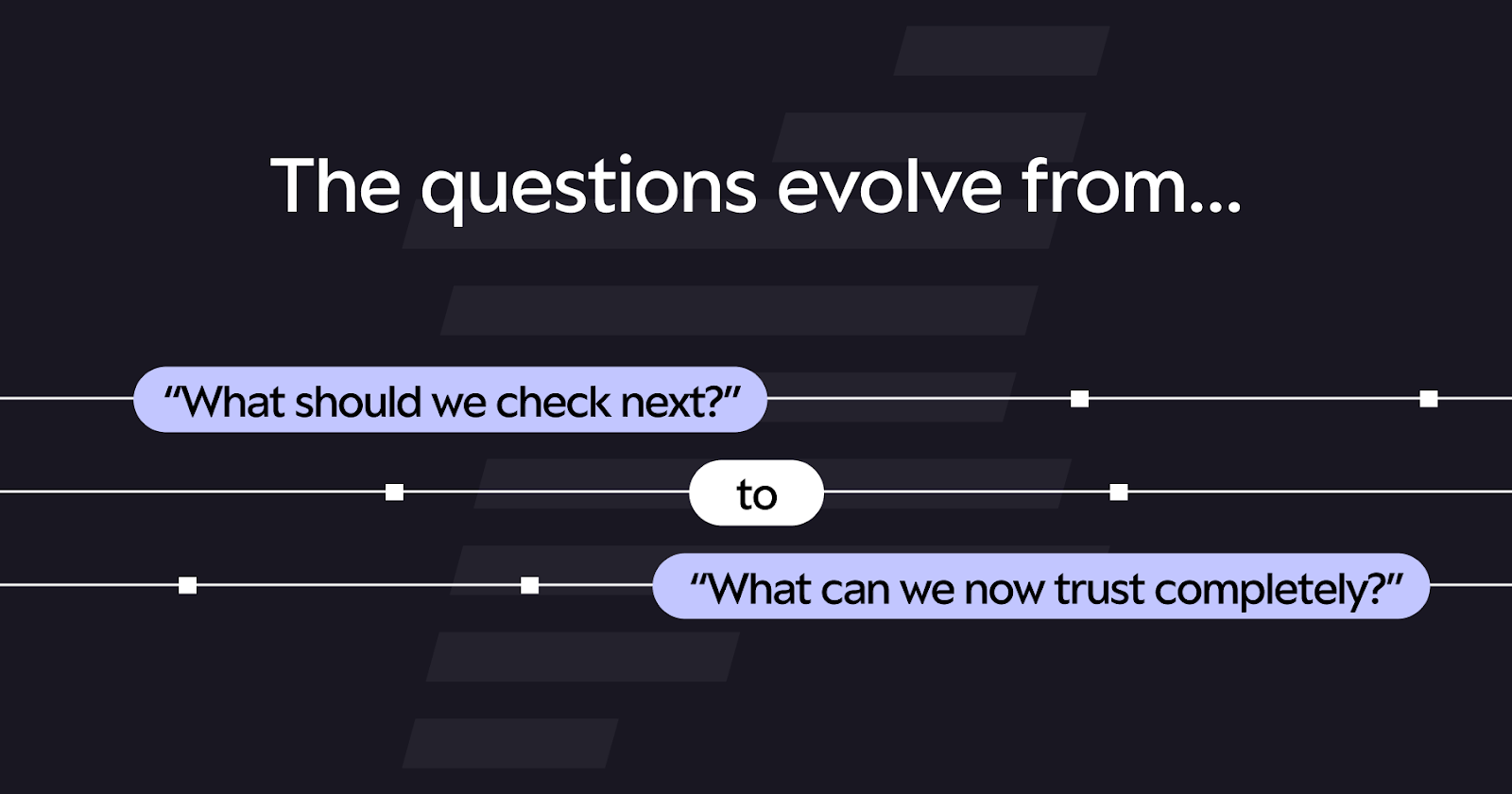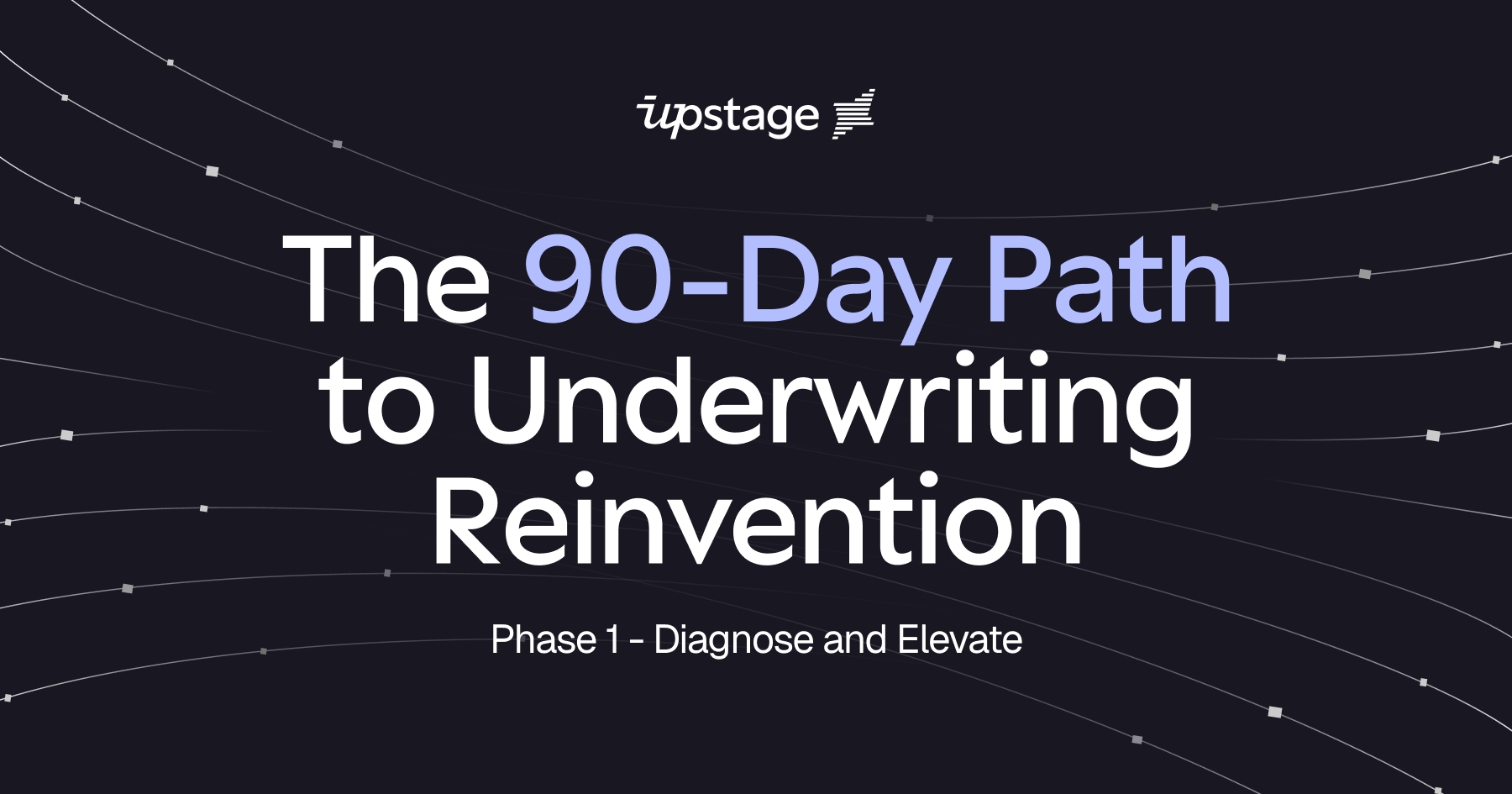When control starts to look like progress
In insurance, control has always been a mark of discipline. Leaders are taught that multiple reviews, detailed audits, and strict sign-offs protect accuracy and uphold reputation. But over time, those same instincts have turned into barriers. The very systems designed to prevent mistakes now make it harder to move forward.
At Upstage, we see this dynamic almost everywhere we go. A carrier wants to modernize its underwriting operation, so leadership approves a series of new systems, each meant to make work smoother. A new intake portal here, an underwriting dashboard there, an additional reporting layer to “increase visibility.” On paper, it looks like progress. In practice, teams are juggling five logins, three approval steps, and two different versions of the same submission record. What was meant to simplify has become another form of control.
That’s why Phase One of our 90-day Modernization Plan exists.
Phase One is the foundation of Upstage’s modernization model. It’s where we help carriers and MGAs step back before they step forward. The goal is to understand how work actually happens: how a submission travels, who touches it, and how many systems it moves through before it’s bound or declined. Together, we map those realities, identify what adds value and what simply adds friction, and decide where automation should step in and where human expertise should remain.
Phase One isn’t about installing software. It’s about revealing the patterns that make software necessary. Once those patterns are visible, our AI Space platform helps organizations see what automation could look like in real terms. Specifically, we help reveal what it would mean for every submission, every touchpoint, and every workflow that currently depends on manual intervention.
How oversight becomes drag

Insurance organizations are built on rigor, and that rigor is a strength. But when every new tool, meeting, and checkpoint is added without removing an old one, rigor becomes drag.
We’ve watched underwriting teams lose hours each week to duplicate processes. Underwriting support teams enter the same information into separate systems because no one fully trusts the integration. Managers create shadow trackers to confirm what’s already in a portal. Teams hold weekly reviews to verify data that AI validation has already confirmed. Each action feels responsible, yet together they consume the energy that should be driving improvement.
During Phase One, we surface these patterns so leadership can see what’s actually happening. Once the process is visible, the conversation shifts. Instead of asking for another layer of oversight, leaders start asking which layers can safely disappear.
Upstage’s Document Intelligence technology supports that shift by introducing system-level validation, automated document classification, and real-time transparency across workflows. When teams can trust the information in front of them because AI has already verified it, they stop spending valuable time proving what’s already been validated.
When trust replaces repetition, speed follows naturally. The process doesn’t just get faster; it gets lighter.
Building trust instead of control

True modernization isn’t about eliminating control. It’s about redesigning it. The goal is to create systems that earn trust so humans don’t have to keep proving it.
That’s why Upstage’s approach to Phase One centers on confidence. Through our suite of document and large language models, we help insurers validate data at the point of origin, ensure documents are automatically categorized, and build transparency into every handoff. We bring 98% verified accuracy to every submission, giving underwriters confidence in what they see. When that trust is built in, re-verification becomes unnecessary and momentum returns to the workflow. When leadership can see progress in real time, they stop asking for status updates (that really only slows work down more).
This is what modern control looks like: visibility without friction. Instead of command, there’s collaboration. Instead of checkpoints, there’s clarity.
And once teams experience that shift, they rarely want to go back. The systems finally feel like they’re working for people, not the other way around.
Redefining leadership’s role

Modernization is about using control productively. The leaders who thrive through transformation are those who step closer to the work, not further away. They recognize that their authority isn’t measured by the number of approvals they grant, but by the quality of the systems they build.
At Upstage, we see that type of change happen when leadership stops layering tools and starts aligning around outcomes. The questions evolve from “What should we check next?” to “What can we now trust completely?” That single shift turns modernization from a technical project into a cultural one.
We get it. Control culture feels safe because it’s familiar. But real confidence comes from clarity, transparency, and trust in the process you’ve designed. That’s the kind of control Upstage helps insurers build. Because even though we’re in the business of selling tech, we know the future of insurance won’t be built by those who have the most, but by those who need the least. And that’s what real modernization should look like.








